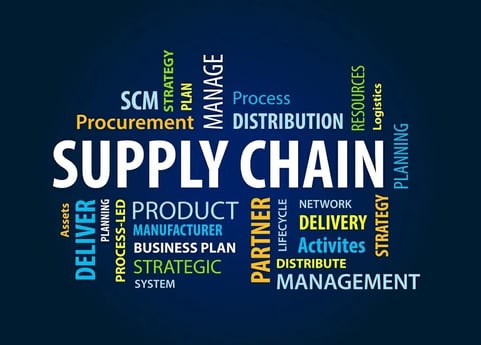
Over the past few years, there have been some major issues in supply chains due to many outside forces, causing manufacturers from all sizes to be impacted, some of these including challenges in manpower, economics, raw materials, and other electronic components. While the larger companies have an easier time recovering from these, the small and mid-sized manufacturers have a bigger hill to climb. However, small and mid-sized manufacturers can take several steps to improve the resilience of their supply chain. Here are some strategies that they can implement:
- Diversify Suppliers: Small and mid-sized manufacturers can reduce their dependence on a single supplier by building relationships with multiple suppliers. When it comes to investing in stocks, the rule of thumb is to not put your eggs into one basket. You should invest in companies from all types of industries. This same rule applies to when you are building your supply chain.
- Develop Contingency Plans: Small and mid-sized manufacturers can develop contingency plans to address unexpected events or disruptions in the supply chain. I recently had the opportunity to speak with Mike Case, the Earthmoving Supply Chain Resiliency Manager from Caterpillar. In our discussion, we talked about how a lot of companies have been shifting from a “just-in-time” ordering system to a “just-in-case” system. A just-in-time system is when a business orders exactly what they need right when they need it, essentially eliminating any excess inventory. A just-in-case system is essentially the complete opposite: it focuses on keeping a large standing inventory in order to reduce the risk of stock outs. This idea is built on the foundation of having a contingency plan because it avoids the risk of not having what you need if suppliers run out of materials, especially if it is a companies’ largest supplier.
- Improve Communication: Small and mid-sized manufacturers can improve communication with suppliers and customers to enhance the visibility of their supply chain. They may not have the ability to quickly adjust to unexpected events or disruptions in the supply chain. This can make it challenging to respond to changes in demand, supplier shortages, or other unexpected events. The COVID-19 pandemic was hard for a lot of businesses, and it especially took a toll on a lot of small and mid-sized manufacturers. By being able to be in constant communication with all facets of the supply chain, manufacturers will be able to plan ahead in order for their production to run smoothly.
- Adopt Technology: Small and mid-sized manufacturers can leverage technology to improve the efficiency and effectiveness of their supply chain. This may involve implementing inventory management systems, demand forecasting tools, and other technologies that can provide better visibility into the supply chain. With the increasing prominence of artificial intelligence in our everyday life, I asked Mike in our interview if he saw Caterpillar invest in using AI to help with any supply chain issues that may come up. While they are not currently using it, he said he would like to explore it a bit to see if it will help eliminate some human error.
Another great point that was brought up in my interview with Mike is that one of their big initiatives is the electrification of machines. Similar to how automobiles are becoming electric to help fight sustainability problems, Caterpillar is doing the same as well with their machines. Because of this, they need to restructure some of the ways in which they order parts, and the use of technology will help eliminate error and make ordering easier.
- Build Strategic Partnerships: By building strategic partnerships with suppliers, customers and other stakeholders in the supply chain, small and mid-sized manufacturers can learn from their partners to strengthen their business. These manufacturers may not have the resources or technology to gain complete visibility into their supply chain. This can result in poor inventory management, production delays, and other issues that can disrupt the supply chain. By building these partnerships, businesses will be able to pull ideas, technologies, and other processes from other sources that will ultimately benefit them in the long-term.
By implementing these strategies, small and mid-sized manufacturers can improve the resilience of their supply chain and better position themselves to succeed in the marketplace.




